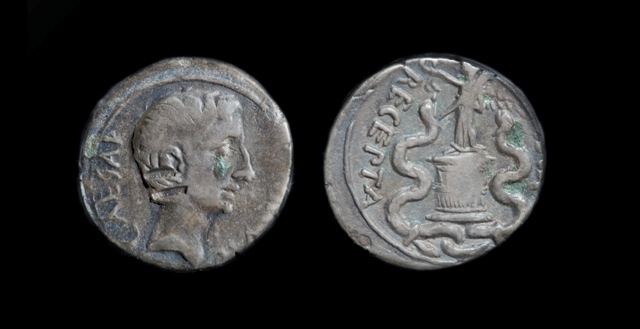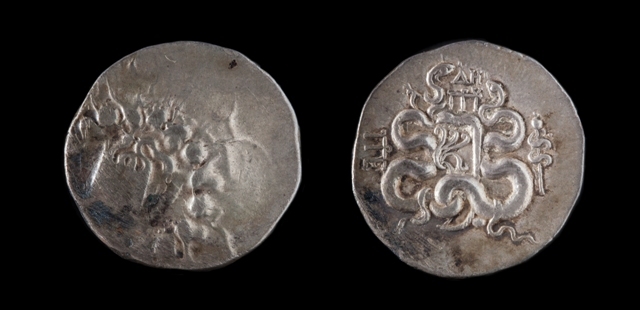Cista Mystica
The cista mystica is one of the most enigmatic images of the ancient world. Usually a basket with snakes inside, the symbol is shrouded in secrecy and convoluted myth. We may never know how these hidden baskets were used in their respective religions.
We do know, at least, that the cista mystica was associated with many mystery religions: including the mystery cults of Dionysus, Demeter/Persephone (Eleusinian mysteries), and possibly Isis.
This coin of Augustus shows a cista mystica as a reference to Asia, which he had "returned" to the Roman Empire. Mystery religions were highly associated with foreign places but the Romans were happy to adapt their practices into the Roman pantheon. The most famous Roman mystery cult was that of Magna Mater (Great Mother). The priests were required to conduct a self-castration before they were initiated as high members.
.
These religions were popular throughout the Hellenistic world for a long period of time: from before the height of Greek civilization down through much of the Roman empire. By the time Rome rose to power, the symbol of the cista mystica had become very much associated with eastern religion and culture.
The cista mystica, shown on the obverse the coin from Pergamon, is a woven basket that contained the sacred objects of a mystery cult. The worship of Dionysos was common in the east and this cistophori (a type of coin) likely refers to his worship, which also included a secret mystery cult.
Their connection to founding myth comes through the story of Athena and Erichthonios, as accounted in this link: Athena- Warrior Goddess.
The basket that hides Erichthonios is often likened to a cista mystica. The opening of the basket, or revelation, was some sort of shocking or surprising moment for initiates. Functioning as a rite of passage, this intense moment would symbolize the initiation of an individual into a secret cult.
The Athenians' founding myth revolves heavily around this cista mystica, possibly hinting at a long history of secret religion with the society.

